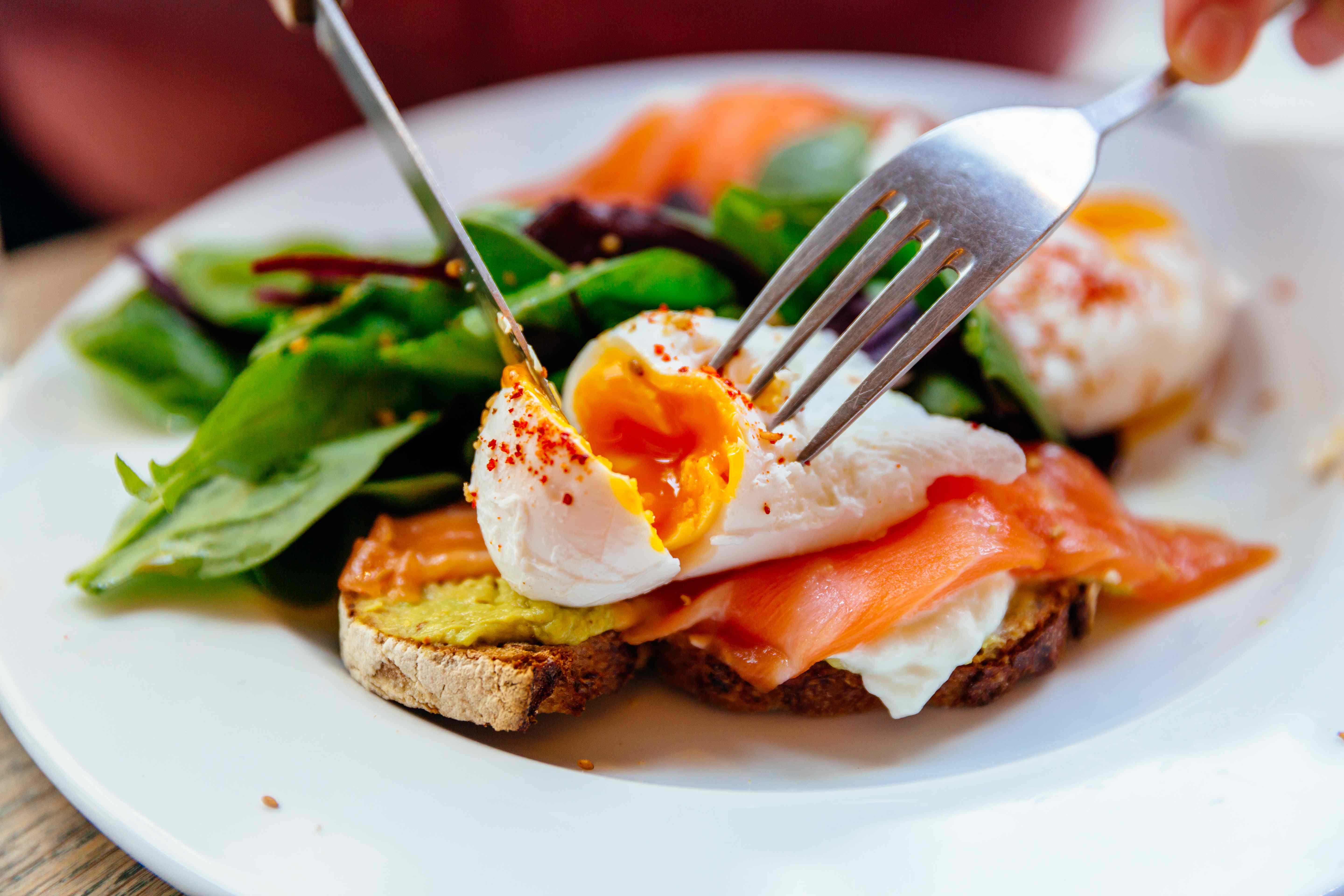Ozempic Can Cause Muscle Loss—Eating More of This Nutrient Could Help Here's what to eat to preserve your muscle on the meds

In a new study, one nutrient made a difference in muscle loss for people losing weight on drugs like Ozempic

Alexander Spatari / Getty Images
- New research suggests eating more protein on weight loss drugs like Ozempic may help prevent muscle loss.
- It’s important to maintain muscle while losing weight, as losing muscle can raise the risk of falls, fractures, and blood sugar issues.
- Besides eating more protein, experts recommend several tips to help preserve muscle while on weight-loss drugs.
Eating less protein may be linked to greater muscle loss for people taking weight loss drugs like Ozempic, according to a recent study presented July 12 at the ENDO 2025 conference, the Endocrine Society’s annual meeting.
Rapid weight loss—regardless of how it’s achieved—is known to reduce lean mass, or muscle. Low muscle mass can increase the risk of falls and fractures, particularly among older adults and other groups susceptible to bone loss. It can also impair the body’s ability to regulate blood sugar levels.
But for those taking GLP-1 receptor agonists, a class of new-generation weight loss medications, diet may play an especially vital role in preserving muscle, researchers found. The study has not yet been published in a peer-reviewed journal.
“Our data suggest that higher protein intake—specifically among participants on semaglutide—may help prevent some loss of lean mass,” study author Melanie Haines, MD, of Massachusetts General Hospital and Harvard Medical School, told Health.
What Did Researchers Find?
For the new study, Haines and her colleagues recruited 40 adults with obesity (but not type 2 diabetes) who visited a weight loss clinic. Doctors prescribed semaglutide, the active ingredient in Ozempic and Wegovy, to 23 patients, and the other 17 followed a diet and lifestyle weight loss program.
After three months, the semaglutide group lost more weight than the diet and lifestyle group, 6.3% compared to 2.5%. The two groups lost a similar percentage of lean muscle mass.
Notably, in the semaglutide group, being older, female, and consuming less protein at the start of the study were all associated with the greatest losses in lean mass. In this group, greater muscle loss was also linked with less improvement in blood sugar levels.
Whether you’re taking a GLP-1 or following a new diet, you’re likely eating fewer calories overall. That means consuming less protein, which contains amino acids that help the body maintain muscle.
While the study didn’t test whether consuming more protein could help stave off muscle loss, the researchers concluded that it seemed likely to do so.
“Our study wasn’t a randomized controlled trial, so we don’t have direct evidence on exactly how much protein,” said Haines. “But it seemed like more protein was better in terms of preventing loss of lean mass.”
Lingering Questions
It’s worth noting, however, that the study has some key limitations, including a lack of peer review. It’s also small, and because most participants were white women, the findings may not apply to a broader population, pointed out Richard Siegel, MD, an endocrinologist and co-director of the Diabetes and Lipid Center at Tufts Medical Center.
While the study answers some questions, it raises others, such as whether people on high-protein diets lose less muscle and which muscles are most likely to atrophy during weight loss. Future studies should dig into these questions, Haines said.
How to Reduce Muscle Loss
Though the study didn’t conclusively show that protein—or any other nutrient—prevents muscle loss, the ability of protein to support muscle health is well known.
To mitigate muscle atrophy, Siegel recommends as much as 1.6 grams of protein per kilogram of body weight for his patients, or about 0.7 grams per pound. That means eating roughly 60 to 120 grams of protein per day. High-protein foods include:
- Seafood, lean meats, and poultry
- Eggs
- Legumes like beans, peas, and lentils
- Soy products
- Nuts and seeds
Other macronutrients and vitamins are also important. “You need fat, you need carbohydrates, you need fiber, you need balance,” Siegel told Health.
Experts also recommend resistance training, such as push-ups, squats, or weightlifting, to help reduce muscle loss. A 2021 study found that, for people taking the GLP-1 drug liraglutide, resistance training helped maintain lean muscle mass.
“If you use medication alone, without smart physical activity and smart nutrition, it is putting patients at risk for problems,” said Siegel. “If your lean mass is down, and your bone mass is down, you’re at risk for falls and fractures, which can ultimately increase morbidity and mortality.”
Some people taking GLP-1 drugs will experience nausea and other side effects and may not have much of an appetite, making it difficult to exercise or eat enough protein. She advises finding a dose with manageable side effects.
“I really encourage my patients that we’re not trying to get to the highest dose as soon as possible,” said Haines. “Starting low and going slow with the dose titrations can help reduce some of the gastrointestinal side effects.”
 Jani Hall
Jani Hall is a news editor for Health with a background in health, science, and investigative reporting. Previously, she wrote full time about parenting issues for the app Parent Lab. Before that, she worked as a reporter for National Geographic covering wildlife crime and exploitation.
learn more
Read more:
Jani Hall
Jani Hall is a news editor for Health with a background in health, science, and investigative reporting. Previously, she wrote full time about parenting issues for the app Parent Lab. Before that, she worked as a reporter for National Geographic covering wildlife crime and exploitation.
learn more
Read more:
This story originally appeared on: Health News - Author:Simon Spichak


















